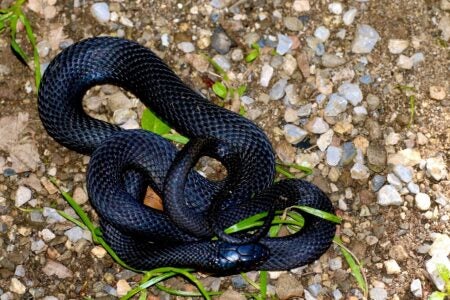There’s a lot to love about snakes
Published 12:16 pm Wednesday, January 24, 2024
|
Getting your Trinity Audio player ready...
|
Snakes need some love. Often misunderstood and great for our environment, snakes sometimes get a bad rap.
Do you think you are more likely to be killed by a snake or a cow in the US? How about a deer? Think about it and read on for the answer.
In western North Carolina, some of the snakes we have are black rat snakes ( my favorite), Eastern garter snakes, copperheads and several rattlesnakes. Of the 37 species of snakes in our state, only six are venomous. In our area, there are no venomous water snakes.
Why are snakes good to have around and are they dangerous? Should you be afraid?
Well, would you believe only six people die from snake bites each year in the US?
Yep, only six people on average die from snake bites a year, and usually, this occurs when they are trying to catch or kill one. By comparison, 20 people die from accidents involving cows, often by being trampled, and over 200 people die from interactions with deer, usually as a result of an auto collision.
Snakes are way more afraid of you than you are of them. However, that is probably hard to believe if you are one of the 33% with ophiophobia, or a fear of snakes.
Snakes shed their skin four to 12 times a year as they grow. Unlike humans, the snake’s skin doesn’t grow as the snake gets bigger. The solution is to get rid of the skin (or molt) regularly. If you are lucky, you might find one as you walk around.
How do they find their next meal? By using their forked tongues, which all snakes have, to smell their food. Pretty cool.
Once they find food, most snakes eat their prey whole. Since they have no limbs to hold onto their prey, they swallow the whole animal and digest it over a period of days. We saw this firsthand when our resident black snake ate all of our baby bluebirds just before they were due to leave the nest. I cried a lot. However, we couldn’t be mad at the snake. It was just finding food. Now we have a snake-proof birdhouse, using baffles, so the snake will have to find food elsewhere. Please don’t use bird netting as snakes get tangled in it and can die.
Most snakes hatch from eggs. After laying the eggs, the mother typically leaves the babies to emerge and fend for themselves. Many of the eggs become prey for other animals, contributing to the food web.
So snakes provide food for other wildlife and also keep your rodent and tick population in check, which is a good thing. As they eat rodents, any ticks on the rodents get eaten, helping reduce the chance of getting nasty tick-related diseases.
Also, snake venom is being used to develop life-saving drugs. The proteins in snake venom treat various cancers, heart attacks, pain and more.
If you keep your distance, snakes are fascinating to watch slithering through your yard all the while dropping great poop for your garden. What’s not to love?
So, how can we help snakes?
First, leave them alone. Snakes won’t bother you if you respect their space. Second, please don’t use rodent poison near your property. When a snake eats a poisoned rodent, the poisoned rodent kills any snake, owl, hawk, or other bird and animal that eats the mouse or rat. And with snakes eating several mice a week, they are much better at controlling rodents than poison.
The best thing you can do is learn about them. The more you learn, the more you love, the more you protect. And in my book, snakes are definitely worth protecting!

A black rat snake eats several mice per week, keeping rodent populations under control.
Loti Woods is a founder of Champions for Wildlife, a nonprofit organization whose mission is to inspire and empower our kids, using art and education, to be champions for wildlife. To learn more, visit championsforwildlife.org.


